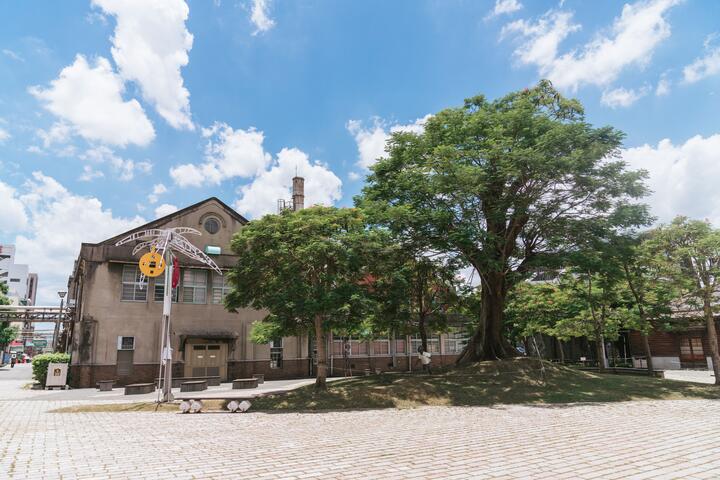Cultural Heritage Park of the Ministry of Culture Introduction
The Cultural Assets Park, covering an area of 5.6 hectares, was originally established as the private "Taisho Brewery Co., Ltd." during the Japanese colonial period in 1916. After the Japanese government implemented a liquor monopoly system in 1922, it was nationalized and became the largest brewing facility in Taiwan in 1928. After Taiwan's retrocession in 1945, the brewery was renamed twice, becoming known as "Taichung Brewery" and "Fifth Brewery." In 1947, the government transferred the monopoly on tobacco and alcohol to the Taiwan Tobacco and Liquor Corporation, which then managed the brewery, and in 1957, it was renamed "Taiwan Provincial Tobacco and Liquor Corporation Taichung Brewery." With changing times and the development needs of urban planning in Taichung City, the Taichung Brewery relocated to a new site in the Taichung Industrial Zone in 1998, leaving behind a large area of industrial heritage and historical buildings. In July 2002, the Taichung City Government registered the main structures of the entire area as historical buildings, allowing the old brewery to be fully preserved. It has since been developed into one of the five major cultural and creative industry parks under the Ministry of Culture. The old Taichung Brewery has been revitalized from an industrial heritage site to a base for promoting cultural and creative industries. After relocating to the new plant in Taichung Industrial Zone, the old brewery left behind a significant amount of industrial heritage and historical architecture, witnessing the development history of Taiwan's liquor industry from the Japanese colonial period to the present. Therefore, in July 2002, it was registered as a historical building by the Taichung City Government, and the National Property Administration transferred the ownership of the 5.6 hectares of land and buildings to the Cultural Construction Committee of the Executive Yuan, ensuring the complete preservation of the old site of the Taichung Brewery. It was designated as one of the five creative cultural parks in the creative industry development plan by the Cultural Construction Committee, aiming to be a base for Taiwan's cultural and creative industries and a center for architecture, design, and artistic performances. Additionally, the Ministry of Culture’s Cultural Assets Bureau, which oversees cultural assets across Taiwan, is also located here. Its policy goals are to effectively combine local governments, higher education institutions, private organizations, and community groups to form a complete network for cultural asset protection, establish an ecological environment conducive to cultural asset development, and promote international cooperation in cultural asset preservation. Today, each facility in the park has taken on a new role. The Wei Shui Building, which was once a packaging materials warehouse, now houses the park's library; the Ya Tang Building, formerly a storage warehouse for rice wine products and semi-finished goods, now serves as a large multi-purpose exhibition hall, contributing to Taiwan's cultural and creative business. The International Performance Hall, located at the corner of the central plaza, was previously used for packaging operations and now hosts various exhibitions, demonstrating the ambition for international outreach. There are a total of 21 buildings in the park awaiting your appreciation and visit. Below is the park's floor plan. Travel Tips: 1. For those wishing to use the park's venue for events, please submit an application in accordance with regulations and await approval. 2. To maintain the quality of visits, please refrain from loud noises, running, or playing after entering the premises. 3. To keep the exhibition space clean and comfortable, please do not smoke, chew betel nut or gum, and refrain from bringing pets, food, or beverages into the exhibition hall. 4. The park does not allow commercial photography or filming. Personal photography must adhere to exhibition regulations. 5. For your safety, do not enter non-public areas or bring dangerous items into the hall. 6. Motor vehicles are prohibited in the park, and illegal parking is not allowed; engineering vehicles for events must park according to the park's regulations.












































